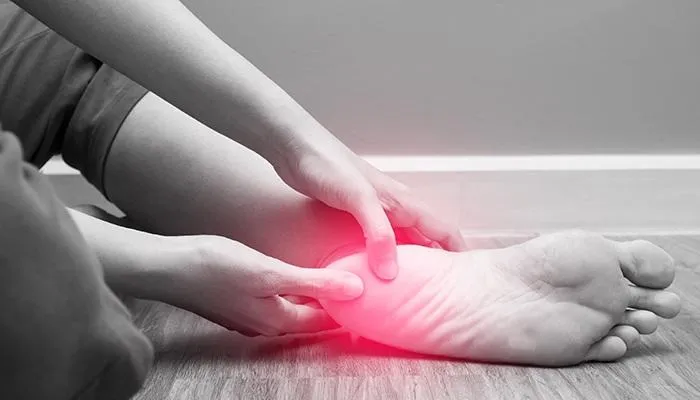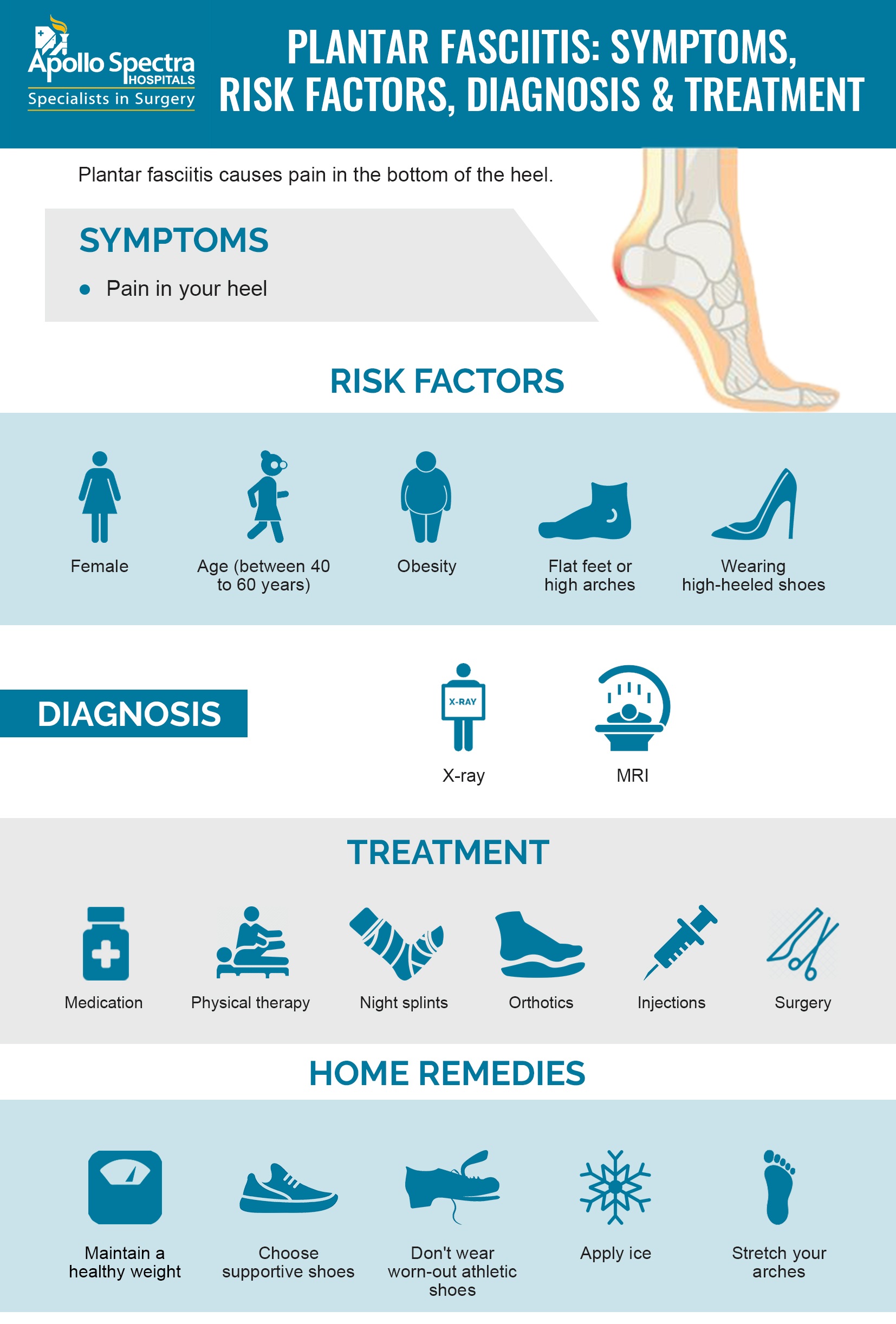Plantar fasciitis - Diagnosis and treatment
March 6, 2020

The plantar fascia is the ligament that connects the back of your foot to your heel. This web-like ligament is responsible for supporting your foot’s arch and also absorbs socks, thus assisting you with walking.
Plantar fasciitis is a condition that causes pain in the heel’s bottom. It is one of the most common conditions that orthopedics deal with. Your day-to-day activities can cause the plantar fascia to undergo some wear and tear. The ligaments may even tear up or get damaged because of too much pressure on your feet. Plantar fasciitis causes the ligament to become inflamed. This inflammation causes stiffness and pain to the heel.
Testing and diagnosis of plantar fasciitis
To test for tenderness in your foot and the exact location from where the pain is arising, your doctor will perform a physical examination. This exam helps make sure that there isn’t another problem in the foot causing the pain.
The physical exam involves the doctor pushing on the plantar fascia ligament while you are asked to flex your foot. They will check whether the pain improves when you point your toe or worsens while flexing. The doctor will also evaluate the presence of any mild swelling or redness. The health of the nerves and strength of the muscles are determined by checking your
- muscle tone
- reflexes
- sense of sight and touch
- balance
- coordination
While it is not always necessary, your doctor may order an MRI scan or X-ray to determine if there is anything like a bone fracture that might be causing pain in the heels.
Treatment
In most cases, conservative treatment method works for plantar fasciitis and people end up recovering after a few months. This involves resting, stretching and icing the area causing pain.
Medication: You may use pain relievers like naproxen sodium or ibuprofen for relieving the inflammation and pain that plantar fasciitis causes
Therapies: Symptoms may be relieved by using special devices or performing strengthening and stretching exercises.
- Physical therapy: There are a few exercises you can perform to stretch the Achilles tendon and plantar fascia for strengthening the muscles in the lower leg. Your physical therapist might also advise you and show you how to apply athletic taping for supporting the bottom of your feet.
- Orthotics: These are custom-fitted or off-the-shelf arch supports that your doctor may recommend for helping have a more even distribution of pressure on your feet.
- Night splints: You may also be recommended to wear a splint while sleeping. This stretching the arch of your foot and your calf, thus holding the Achilles tendon and plantar fascia in a lengthened position and promoting stretching.
Medical procedures: These procedures are usually recommended when conservative methods fail to work. These include:
- Injections: You can get temporary pain relief through the injection of steroid medication in the tender area. However, it is not advisable to have multiple shots since it can cause your plantar fascia to weak and possibly even rupture. Platelet-rich plasma (PRP) 6 can also be obtained from your own blood using ultrasound imaging, which can then be injected for promoting healing of the tissue.
- Surgical intervention: In some cases, a surgical approach may be required for detaching the plantar fascia from the heel bone. This option is considered when other treatments haven’t worked and the condition is causing severe pain. The surgery can be performed with local anesthesia and small incisions or as an open procedure.
- Extracorporeal shock wave therapy (ESWL): This treatment involves sound waves being directed to the location of pain, thus stimulating healing. This procedure is generally used when the plantar fasciitis is chronic and the conservative treatments have failed.
Plantar Fasciitis Home remedies and lifestyle changes
Here are a few tips that might help in reducing the pain caused by plantar fasciitis:
- Try to maintain a healthy weight as there is more stress on the plantar fascia if you are overweight
- Try wearing shoes with thick soles, low or moderate heels, extra cushioning and arch support.
- Avoid walking barefoot
- Replace your worn-out athletic shoes and wear them only as long as they provide enough cushion and support
- Hold an ice pack over the affected area 3-4 times a day for a period of 15 minutes. This can help with inflammation and pain.
NOTICE BOARD
CONTACT US
CONTACT US
 Book Appointment
Book Appointment


.svg)
.svg)
.svg)
.svg)








